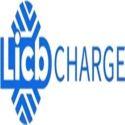Notifications

7 minutes, 59 seconds
-13 Views 0 Comments 0 Likes 0 Reviews

LiCB Charge, a leading EV charger manufacturer in China, delivers dependable AC and DC electric vehicle charging stations along with complete, integrated charging solutions.
As the world accelerates toward sustainable transportation, electric vehicles (EVs) are leading the charge. With benefits like reduced emissions, lower fuel costs, and quieter operation, EVs are reshaping how we think about mobility. However, the infrastructure needed to support widespread adoption remains uneven—particularly for renters.
While homeowners can often install charging stations with relative ease, the 44 million U.S. households in rental properties face unique barriers. To ensure a successful EV transition, charging must be accessible to everyone—including renters.
Apartment EV charging is no longer a luxury of the future. With EVs already making up 8.6% of U.S. vehicle sales—and projected to reach 13–29% by 2050—multifamily communities must begin investing in this critical amenity today.
Before diving into the challenges and opportunities of EV charging in multifamily settings, it’s helpful to understand the three primary types of EV charging:
Level 1 uses a standard 120V household outlet. While nearly every residence has one, it delivers only about 1 kWh per hour—translating to 3–5 miles of range. A full charge can take over 50 hours, making this method impractical for daily driving needs.
Level 2 chargers use a 240V circuit and provide up to 19 kWh of power, adding 15–40 miles of range per hour. Most EVs can be fully charged in 4–10 hours. For apartments, Level 2 strikes the best balance between cost, speed, and user satisfaction.
DC fast chargers operate at 400–1000V and can charge an EV to 80% in under an hour. While ideal for public hubs and highway corridors, their high cost and power demands make them less practical for most apartment buildings—though they may suit large urban developments.
One of the greatest barriers to EV adoption is the fear of running out of power without access to charging. Apartment-based EV chargers help alleviate this anxiety by ensuring renters can leave home each day with a full battery—making EVs as dependable as gas-powered vehicles.
Having access to home charging transforms EV ownership from a logistical chore into a seamless experience. Renters can charge overnight while they relax, eliminating the need for detours to public charging stations.
Unlike homeowners, renters typically can’t install chargers on their own. By offering EV charging as an amenity, landlords remove a significant adoption hurdle—making their properties more appealing and future-ready.
Public charging costs vary and can be significantly higher than home rates. Apartment charging offers predictable, potentially lower rates that can be built into lease agreements or provided as value-added services to tenants.
Despite the clear benefits, installing EV chargers in multifamily dwellings comes with obstacles. Thankfully, modern technology and strategic planning can solve most of them.
Older buildings may lack the capacity to support multiple EV chargers.
Solution: Start with a professional electrical assessment. Load management systems and smart chargers can distribute available power efficiently, reducing the need for major upgrades.
Assigned or limited parking makes charger access more complex.
Solution: Begin with shared or reserved spots, expand based on demand, and manage access with reservation systems or apps. Charging use can be monetized to promote fairness and recoup costs.
Open-air parking introduces weather and connectivity concerns.
Solution: Choose weather-resistant chargers designed for outdoor use. Mount on pedestals, walls, or bollards, and use trenching and conduit to protect wiring. Smart chargers with Wi-Fi or cellular connectivity ensure remote access and monitoring.
Upfront costs can deter property owners.
Solution: Tap into federal, state, and utility rebate programs to offset costs. Revenue from user fees or third-party charging partnerships can provide a long-term return on investment.
More tenants are choosing eco-friendly lifestyles. Offering EV charging positions your property as progressive and sustainable—helping attract and retain high-value tenants.
EV infrastructure future-proofs your asset and enhances overall marketability. Studies show that green amenities can boost property values and improve tenant satisfaction.
Charge tenants per kWh, per hour, or with a flat monthly fee. With the right system, EV charging can become a self-sustaining or profit-generating amenity.
The transition to electric mobility must be inclusive. Renters deserve access to reliable charging just as much as homeowners. From suburban complexes to urban towers, multifamily housing must play an active role in building equitable charging infrastructure.
The good news? With scalable solutions, incentives, and growing demand, EV charger installation is not only feasible—it’s a competitive advantage.
EV charging at apartments is no longer optional—it’s essential.
From reducing range anxiety and enhancing tenant satisfaction to boosting property value and sustainability, apartment EV charging is a win-win for renters and property owners alike.
As EV adoption accelerates and cities enforce clean energy policies, charging access will become an expectation—not an extra. Property owners and managers who invest now will stand out in tomorrow’s rental market, while helping shape a more sustainable future.
The electric future is here. The question is—are your properties ready for it?Know more about Google SEO Directory
China EV Chargers EV Charger Manufacturer Smart EV Chargers Electric Car Chargers Electric Vehicle Chargers Electric Car Charging Stations

